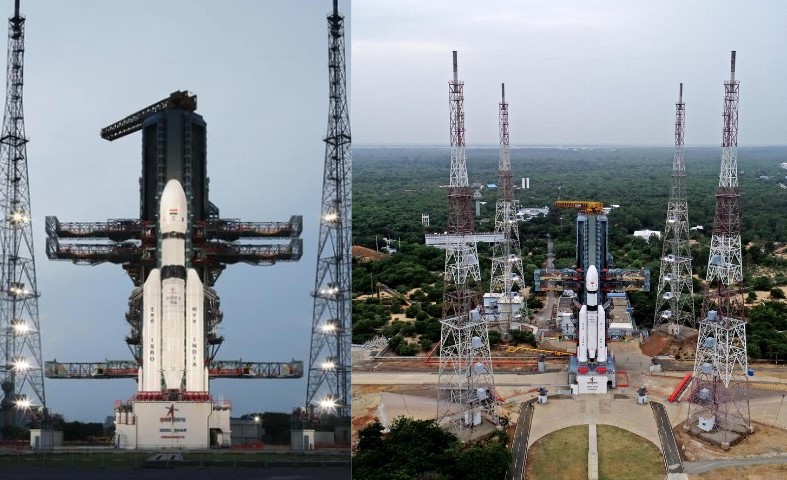SRIHARIKOTA, INDIA – In a highly anticipated event, the third edition of India’s moon mission, Chandrayaan-3, is scheduled to take off today, July 14, at 2:35 pm from the Satish Dhawan Space Centre aboard a Launch Vehicle Mark 3 (LVM3). With excitement building among the scientific community and Indians worldwide, hopes are high for a successful venture into space.
The countdown for this historic mission began on Thursday, marking the culmination of years of preparation and technological advancements. The Indian Space Research Organisation (ISRO) announced the commencement of the countdown with a tweet that read, “The countdown leading to the launch tomorrow at 14:35:17 Hrs. IST has commenced.”
The Chandrayaan-3 mission carries the weight of previous setbacks, most notably the crash-landing of Chandrayaan-2 in September 2019 due to a software glitch. Drawing valuable lessons from the past, ISRO has implemented numerous improvements in Chandrayaan-3 to ensure a triumphant outcome. The anticipated landing on the Moon is projected to occur on August 23.
Chandrayaan-3 comprises an indigenous propulsion module, a lander module, and a rover, all of which serve the purpose of developing and demonstrating new technologies necessary for inter-planetary missions. The propulsion module will transport the lander and rover from the injection orbit to a lunar orbit of 100 km. Additionally, it carries a Spectro-polarimetry of Habitable Planetary Earth (SHAPE) payload designed to study the spectral and polarimetric measurements of Earth from the lunar orbit.
A successful Chandrayaan-3 mission would place India in an exclusive club of nations that have achieved such a remarkable feat, joining the United States, China, and the former Soviet Union.
Prominent former ISRO scientist, Nambi Narayanan, expressed his optimism for the mission, highlighting the significance of a successful landing. Narayanan stated that India’s accomplishment would make it the fourth nation to achieve this milestone, thus bolstering the country’s potential for space science development. Furthermore, he emphasized the positive impact on India’s share in the global space industry, which currently stands at a mere 2% of the lucrative $600 billion market.
Chandrayaan-3 owns a fail-safe design approach
ISRO Chairman S. Somanath explained the design strategy employed in Chandrayaan-3, contrasting it with its predecessor, Chandrayaan-2. Rather than focusing solely on success, the space agency adopted a failure-based design approach, addressing potential failure points and implementing measures to safeguard against them, ultimately ensuring a successful landing.
Unlike Chandrayaan-2, which consisted of a Vikram lander, Pragyan rover, and an orbiter, Chandrayaan-3 will launch with only a lander and a rover. To meet its communication and terrain mapping requirements, Chandrayaan-3 will utilize the existing Orbiter from Chandrayaan-2, which remains in lunar orbit.
The Chandrayaan-3 lander mission is equipped with “lander hazard detection and avoidance cameras” to facilitate coordination with the orbiter and mission control during the landing process on the Moon’s surface.
ISRO’s Somanath disclosed that the landing area for Chandrayaan-3 has been expanded from 500m x 500m to an impressive four km by 2.5 km. “It can land anywhere, so it doesn’t limit you to target a specific point. It will target a specific point only in nominal conditions. So, if the performance is poor, it can land anywhere within that area,” he explained.
Somanath further revealed that Chandrayaan-3 possesses a greater fuel capacity, granting it enhanced maneuverability and the ability to handle dispersion or relocate to an alternate landing site. Additionally, the Vikram lander now features additional solar panels on multiple surfaces to ensure the generation of power, regardless of its landing orientation.
As India’s Chandrayaan-3 prepares for liftoff, the nation finds itself on the brink of a significant milestone in its space exploration journey. With the world watching, India is poised to inspire a new generation of scientists and pioneers, while cementing its position as a rising star in the global space community.






